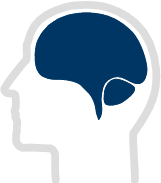International Graduate School of Neuroscience

Colloquium
Reading into neuronal oscillations and top-down attention:their implications for dyslexia
Monday, December 19, 2016, 3 p.m., Seminar Room FNO - 01 / 117
- Trichur Vidyasagar
- Departments of Optometry & Vision Science and Melbourne Neuroscience Institute, University of Melbourne, Australia
Natural visual scenes often consist of far too many objects and features that cannot be processed simultaneously and furthermore there is often no behavioural need for them all to be processed. Filtering of such signals from a cluttered environment appears to be achieved through a process of selective attention, mediated by top-down mechanisms. I will present evidence from macaques for a neural mechanism in a part of the posterior parietal cortex (area LIP) that performs such a function in two stages: a first stage that selects object locations of possible behavioural interest based on crude information and a second stage where these objects may be processed in detail one after the other.I will also describe a scheme where the neural processes that had evolved to achieve such top-down gating through synchronised neuronal oscillations are recycled in recent human history to develop reading and writing. This framework also allows us to reveal the possible neural basis of the difficulties typically encountered by the reading impaired.
Host
- Ulf Eysel
Department of Neurophysiology, Faculty of Medicine, Ruhr University Bochum
